+86 177 5193 6871
222, Block B, Diamond International, Guozhuang Road, Xuzhou, Jiangsu, China
Exhibition architecture is a type that embodies expressiveness and innovation. As venues for showcasing art, culture, technology, and more, these structures themselves become massive works of art, with their designs often transforming into city landmarks and cultural symbols.
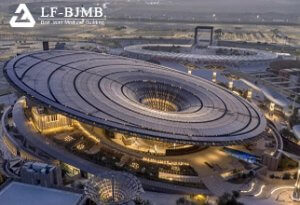 I.Inspiration from Natural Forms and Abstraction
I.Inspiration from Natural Forms and Abstraction
Many exceptional exhibition buildings draw their design inspiration from organic forms found in nature. Designers abstract and reconstruct these natural forms to create vibrant architectural shapes.
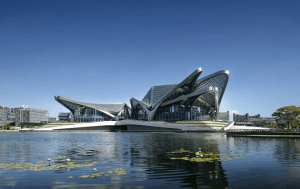
Biomorphic Forms
For instance, the Beijing National Aquatics Center (Water Cube) derives its form from the structure of water molecules and soap bubbles. The design magnifies and repeats the hexagonal structure of water molecules to create the overall appearance of the building. The irregular cut surfaces impart a light, translucent quality reminiscent of soap bubbles. This design not only reflects the intrinsic connection between the building and water but also produces a unique visual effect.
Topographical Forms
The design of the Guggenheim Museum Bilbao draws inspiration from the surrounding mountainous terrain. The building features irregular curves and a metallic skin that resembles the eroded contours of a mountain. This design not only harmonizes with its environment but also creates a unique sculptural presence.
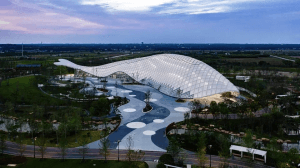 II.Deconstruction and Reconstruction of Geometric Forms
II.Deconstruction and Reconstruction of Geometric Forms
In addition to referencing natural forms, many exhibition buildings also shape dynamic forms through innovative applications of geometry.
Polyhedral Deconstruction
The architecture comprises multiple irregular polyhedral units, each arranged at different angles. This design breaks away from traditional architectural regularity, creating rich spatial layers and varied light and shadow effects.
Spiraling Ascent
The building unfolds in an inverted conical spiral, forming a continuously rising exhibition space. This design not only generates a unique external silhouette but also provides a smooth visitor flow for internal exhibitions.
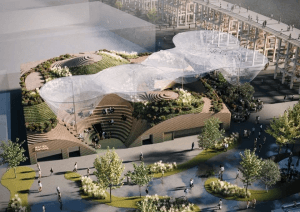
III. Innovative Expression of Materials and Structures
The aesthetic appeal of exhibition architecture largely depends on the innovative use of materials and structures. By applying new materials and technologies, designers can transcend the limitations of traditional architectural forms, creating lighter and more transparent spatial effects.
Membrane and Tension Structures
The Eden Project in the UK employs an innovative ETFE membrane structure, creating a vast domed space using lightweight, transparent membrane materials. This design significantly reduces the building’s weight while achieving a translucent, airy visual effect akin to soap bubbles.
Parametric Design
The Harbin Grand Theatre utilizes parametric design methods, generating complex curved shapes through algorithms. The building’s exterior consists of numerous irregular triangular facets, presenting a crystalline effect reminiscent of ice. This design not only showcases the application of digital technology in architectural design but also creates a unique regional cultural symbol.
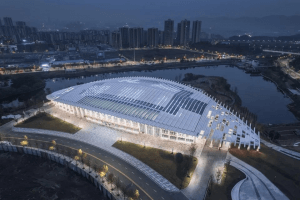
IV.Interaction of Light, Shadow, and Space
The aesthetic appeal of exhibition architecture is not only manifested in its static forms but also in its dynamic interactions with light and the environment. Excellent exhibition building designs skillfully harness natural light to create a rich and changing spatial atmosphere.
By employing adjustable shading systems, the architecture can modify internal lighting according to sunlight variations, producing light and shadow effects akin to ripples on water. This design enhances the building’s environmental performance while creating a diverse visual experience.
Design Technique: Combining dynamic shading systems with architectural forms to create variable light and shadow effects.
Architectural Aesthetic: The interplay of flowing light and shadow with geometric forms presents a picturesque spatial ambiance.
The design of exhibition architecture is a concentrated expression of architects’ artistic creativity. Through the inspiration drawn from natural forms, innovative geometric applications, breakthroughs in materials and structures, and the shaping of light and shadow in space, designers create breathtaking architectural masterpieces.
